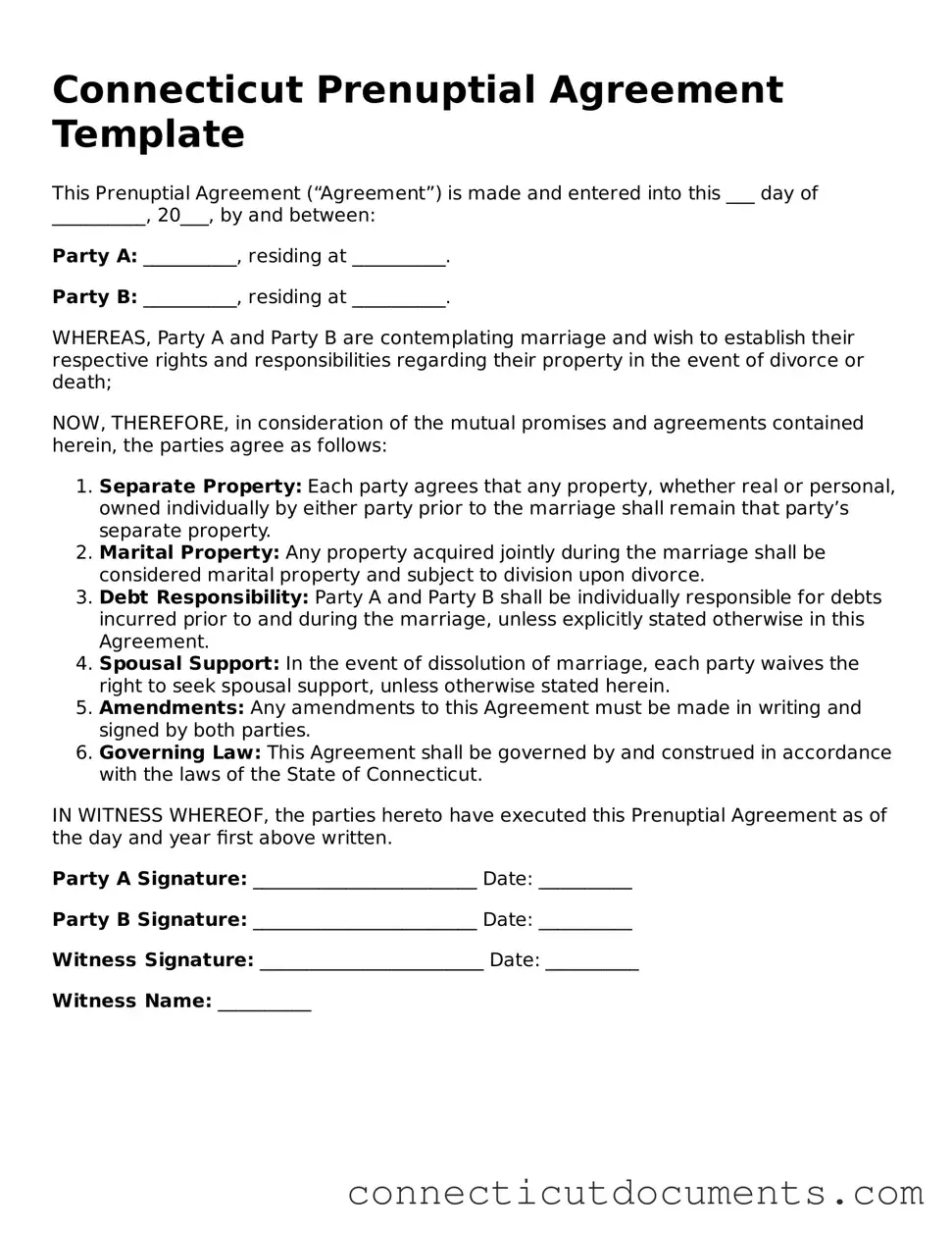What is a prenuptial agreement in Connecticut?
A prenuptial agreement, often called a "prenup," is a legal document that couples create before they get married. It outlines how assets and debts will be divided in the event of a divorce or separation. In Connecticut, prenups can also cover issues like spousal support and property rights, helping to clarify expectations and protect both parties’ interests.
Do I need a lawyer to create a prenuptial agreement in Connecticut?
While it’s not legally required to have a lawyer when drafting a prenuptial agreement, it is highly recommended. A lawyer can help ensure that the agreement is fair, legally sound, and tailored to your specific needs. Having independent legal advice can also help prevent future disputes about the agreement's validity.
What should be included in a Connecticut prenuptial agreement?
A comprehensive prenuptial agreement typically includes details about each party's assets and debts, how property will be divided in case of divorce, and any provisions for spousal support. It may also address how future income or property acquired during the marriage will be treated. Being thorough can help avoid misunderstandings later on.
Can I modify a prenuptial agreement after marriage?
Yes, you can modify a prenuptial agreement after you get married. However, both parties must agree to the changes, and it’s best to document any modifications in writing. Again, consulting with a lawyer during this process is advisable to ensure that the changes are legally enforceable.
Are prenuptial agreements enforceable in Connecticut?
Yes, prenuptial agreements are generally enforceable in Connecticut, provided they meet certain legal requirements. For instance, both parties must voluntarily sign the agreement, and it should be fair and reasonable at the time it was created. If there are issues of coercion or if one party was not fully informed about the other’s financial situation, the agreement may be challenged in court.
How do I start the process of creating a prenuptial agreement?
To start creating a prenuptial agreement, both partners should openly discuss their financial situations and what they hope to achieve with the agreement. Once you have a clear understanding, consult with a lawyer who specializes in family law. They can guide you through the drafting process and help ensure that the agreement meets Connecticut’s legal standards.
Is a prenuptial agreement only for wealthy individuals?
No, prenuptial agreements are not just for wealthy individuals. They can be beneficial for anyone entering a marriage, regardless of financial status. A prenup can help protect personal assets, clarify financial responsibilities, and provide peace of mind for both partners. It’s about ensuring that both parties feel secure and understood in their financial arrangement.
